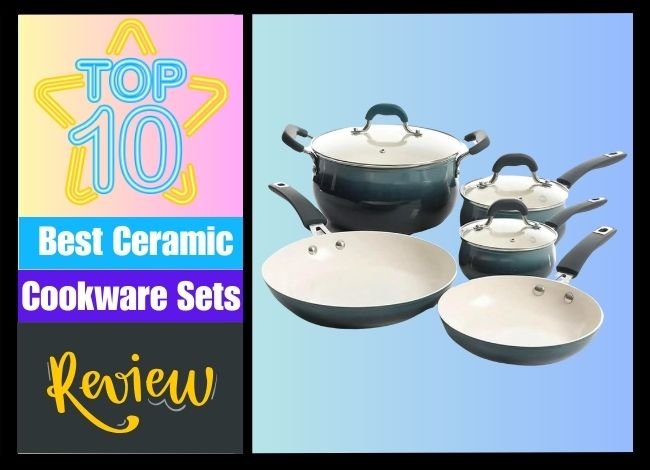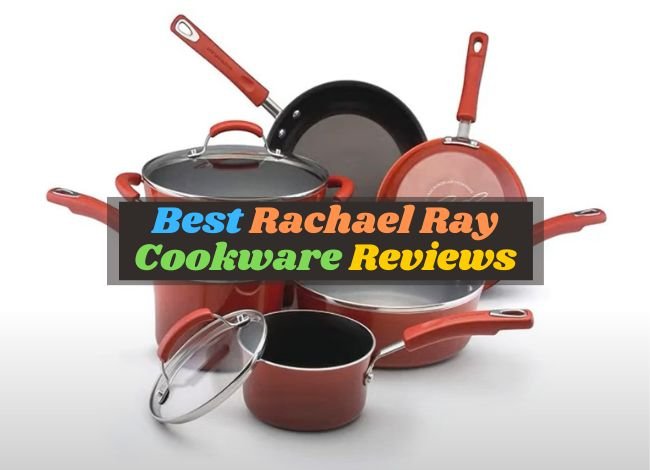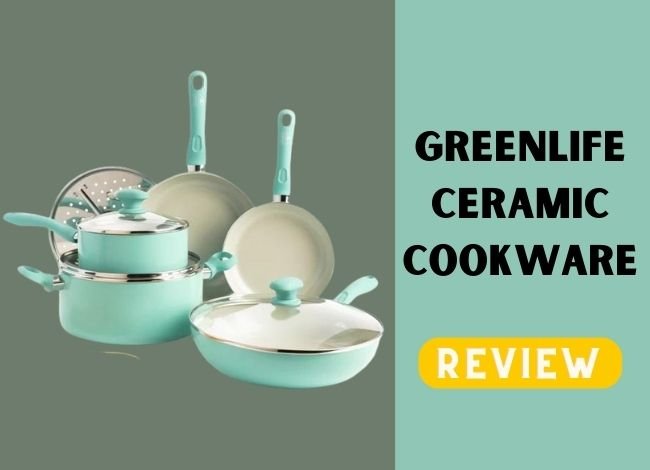Last Updated on February 10, 2024
Two popular choices often come into the debate when outfitting your kitchen with the latest appliances: steam ovens and microwaves. Both offer unique benefits and conveniences, but which one is truly better for your kitchen? This comparison sheds light on the differences between steam ovens and microwaves, helping you decide which appliance best suits your cooking needs and lifestyle by understanding how each works and their respective advantages, you can make an informed decision that enhances your culinary experiences.
Features Comparison Table: Steam vs. Microwave
| Feature | Steam Cooking | Microwave Cooking |
|---|---|---|
| Cooking Method | Uses hot steam to cook food, preserving moisture and nutrients. | Uses electromagnetic waves to heat water molecules in food, cooking it quickly. |
| Nutrient Retention | High. The gentle cooking method helps in retaining vitamins and minerals. | Moderate. Some nutrients may break down due to the high heat. |
| Cooking Time | Generally longer than microwave cooking, but varies depending on the food. | Quick. Microwave cooking is faster for most foods. |
| Energy Efficiency | High. Steam cooking is energy efficient, especially for larger quantities of food. | Moderate. Microwaves are energy efficient for small to medium portions. |
| Ease of Use | Simple once the setup is ready, but may require more preparation time. | Very easy and convenient for reheating food and quick cooking. |
| Taste & Texture | Foods retain moisture, making them tender and flavorful. | Can sometimes cause uneven cooking, affecting texture and taste. |
| Safety | Safe if handled correctly, though there’s a risk of burns from steam. | Safe, but there’s a risk of burns from hot food or containers, and proper containers must be used. |
| Versatility | Excellent for vegetables, fish, and meats, enhancing natural flavors without additional fats. | Good for a wide range of foods, but not ideal for all cooking methods like browning or crisping. |
| Initial Cost | Can vary from affordable to high-end models for steam ovens. | Generally affordable, with a wide range of options available. |
| Maintenance & Cleaning | Requires regular cleaning to prevent mineral buildup; easier with specific models. | Easy to clean, especially with models that have a self-cleaning feature. |
Microwaves vs. Steam Ovens: How Do They Differ and When Should You Use Each?
Microwaves and steam ovens stand out in the kitchen for their ability to cook food quickly, but they do so in fundamentally different ways. Microwaves cook food using electromagnetic radiation. This process agitates water molecules in the food, generating heat that cooks the food from the inside out. This method is particularly efficient for reheating leftovers, defrosting frozen goods, and cooking ready-made meals.
On the other hand, steam steam ovens use hot steam to cook food. Water is heated to produce steam, which then circulates inside the oven, enveloping and cooking the food evenly. This method retains more nutrients and keeps food moist, making it ideal for vegetables, fish, and lean meats.
Choosing between a microwave and a steam oven depends on your cooking habits. A microwave might be your go-to if you value speed and convenience for a wide range of foods. However, a steam oven could be more beneficial if you prefer cooking methods that preserve nutrients and texture.
Microwaves
Microwaves have become a staple in modern kitchens due to their convenience and speed. They are perfect for those with a busy lifestyle, allowing for quick meal preparation without the need for extensive cooking. Microwaves are time- and energy-efficient, using less electricity than conventional ovens.
How Does a Microwave Work?
A microwave oven uses electromagnetic radiation to cook food. Inside the microwave, a magnetron device generates microwaves, which are a type of electromagnetic wave. These waves penetrate the food, causing the water molecules within to vibrate rapidly. This vibration creates heat, which cooks the food from the inside out.
Microwaving is highly efficient, as it directly heats the molecules in the food, reducing cooking times significantly. Unlike conventional cooking methods, microwaves can cook food evenly, as the waves can reach all parts of the food. However, because microwaves target water molecules, foods with uneven water distribution might cook unevenly. For best results, stirring or rotating food during cooking is recommended.
when deciding between a steam oven and a microwave for your kitchen, consider your cooking needs, preferences, and lifestyle. Microwaves offer unmatched speed and convenience for a wide range of tasks, from reheating to defrosting, making them indispensable for quick meal prep. Steam ovens, with their ability to cook food gently and preserve nutrients and moisture, are ideal for health-conscious cooks and those who enjoy experimenting with a variety of dishes. Choosing between a steam oven and a microwave depends on your cooking style and what you value most in your kitchen appliances.
Why Do People Love Microwaves?
Microwaves are a staple in kitchens worldwide, beloved for their convenience, speed, and versatility. The primary reason for their popularity is the ability to heat food quickly, making meal preparation faster than traditional cooking methods. Microwaves use electromagnetic radiation to vibrate water molecules in food, generating heat from the inside out. This means you can reheat leftovers, make popcorn, or even cook certain meals in a fraction of the time it would take on a stove or in an oven.
Moreover, microwaves are incredibly user-friendly. With the push of a button, you can defrost, reheat, or cook without monitoring the process closely. This ease of use particularly appeals to busy individuals or those with minimal cooking experience. Additionally, microwaves are compact and efficient, requiring less energy than ovens and fitting comfortably in small kitchen spaces.
Another advantage is the minimal cleanup required. Since food is cooked in containers, there’s no need to deal with multiple pots and pans. This aspect, combined with the speed and ease of use, makes microwaves a favorite among those who prefer convenience in the kitchen.
What Can You Cook in a Microwave?
The versatility of microwaves extends beyond reheating leftovers. This appliance can be used to cook a wide variety of dishes, from simple snacks to complete meals. For instance, microwaves are excellent for steaming vegetables, preserving their color, and retaining more nutrients than boiling. In a microwave, you can also cook eggs in various forms, such as scrambled, poached, or even omelets.
Microwaves are not limited to just simple dishes. You can bake potatoes, make crispy bacon, or even cook a whole chicken. With the right microwave-safe accessories, you can also bake cakes and bread. The key to microwave cooking is understanding how to use it to its full potential. This involves adjusting power levels, using microwave-safe containers, and occasionally stirring or flipping food to ensure even cooking.
Innovative cooks have found ways to use microwaves to make homemade yogurt, proof yeast dough, and even small batches of jam. The microwave’s ability to directly target cooking energy to the food can result in surprisingly good dishes that defy the misconception that microwave cooking is inferior.
How Much Does a Microwave Cost?
Microwave ovens vary widely in price, depending on their size, power, and features. Basic models can start as low as $50, offering simple functions suitable for reheating food and cooking ready meals. These are great for individuals or small families on a budget.
Mid-range microwaves, priced between $100 and $250, often include additional features like grill functions, pre-programmed settings for specific foods, and more sophisticated defrosting options. These models balance functionality and cost, and are suitable for most households.
For those seeking the latest in microwave technology, high-end models can cost upwards of $250 to $500 or more. These premium options may include convection cooking, allowing you to bake and roast as you would in a traditional oven. They also feature advanced sensors to adjust cooking time and power levels automatically for optimal results. While more expensive, these microwaves cater to enthusiasts looking for an all-in-one kitchen appliance.
Steam Ovens
Steam ovens are a revolutionary kitchen appliance, bringing the age-old steam cooking method into the modern era with precision and convenience. Unlike traditional ovens that cook food through circulating hot air (convection) or microwaves that use radiation, steam ovens use water vapor to cook food. This method not only retains moisture but also preserves nutrients and flavors that are often lost in conventional cooking methods.
The magic of steam ovens lies in their versatility. They can cook everything from vegetables to meats and even delicate desserts. They offer a healthier cooking method by eliminating the need for oils and fats. Furthermore, steam cooking can reduce cooking times and energy consumption, making it an efficient choice for any kitchen.
Why Do People Love Cooking with Steam?
Cooking with Steam has garnered a dedicated following for several reasons. Firstly, the moisture content in steam helps cook food evenly and gently, ensuring that food remains moist and flavorful. This is particularly beneficial for baking bread with a perfect crust or cooking succulent meats.
Moreover, steam cooking is known for its ability to maintain the integrity of ingredients, preserving vitamins and minerals that are often degraded through other cooking methods. Health-conscious individuals appreciate this aspect, as it aligns with the goals of maintaining a nutritious diet.
Additionally, steam ovens offer convenience. Many modern models come with pre-set programs for different foods, making achieving perfect results every time easier. The ability to cook multiple dishes simultaneously without flavor transfer is a significant advantage for those who value efficiency in the kitchen.
How Does a Steam Oven Work?
A steam oven operates by generating steam from a water source, which is then introduced into the oven chamber to cook food. The process begins with either a built-in water reservoir or a direct water line connection that supplies water to a boiler. Once the oven is activated, the boiler heats the water until it becomes steam.
This steam is then released into the oven chamber, enveloping the food in moisture. The oven’s temperature and humidity levels can be precisely controlled, allowing for a wide range of cooking techniques, from steaming vegetables to roasting meats and baking bread.
The efficiency of steam ovens comes from their ability to rapidly transfer heat through steam, cooking food quickly and evenly. The closed environment also prevents the loss of flavors and nutrients, enhancing the overall quality of the cooked food.
What Can I Cook in a Steam Oven?
Steam ovens are incredibly versatile, allowing you to cook a wide range of dishes that might not be feasible or as effective in a microwave. The power of steam cooking lies in its ability to cook food, gently preserving its moisture, nutrients, and flavors. This method is ideal for a variety of foods, including but not limited to:
- Vegetables: Steam cooking preserves the texture, color, and nutrients of vegetables much better than boiling or microwaving.
- Fish and Seafood: Delicate foods like fish benefit from steam cooking, as it doesn’t dry out or overcook the flesh, keeping it moist and tender.
- Meat: Even meats can be cooked in a steam oven, with results that are often juicier and more flavorful than traditional oven roasting.
- Rice and Grains: Cooking rice and grains in a steam oven can yield fluffy, perfectly cooked sides without the need for constant stirring or watching.
- Reheating Leftovers: Unlike microwaves, which can unevenly heat and sometimes rubberize food, steam ovens reheat dishes evenly, restoring moisture and keeping the texture intact.
How Much Does a Steam Oven Cost?
The cost of a steam oven can vary widely based on brand, size, and features, with prices ranging from $1,000 to over $3,500. While this is a significant investment compared to the average microwave, the benefits of steam cooking can justify the expense for many. Higher-end models often have additional features such as convection baking, slow cooking settings, and intelligent technology integrations allowing remote operation and monitoring. When considering the cost, it’s essential to factor in the longevity and efficiency of steam ovens and the potential savings from cooking more at home with better results. Investing in a steam oven can elevate your cooking experience, offering restaurant-quality results with minimal effort.
Upgrade Your Kitchen with a Steam Oven
Upgrading your kitchen with a steam oven can bring a new dimension to your cooking and eating habits. The initial cost might seem high, but the advantages are considerable:
- Improved Nutritional Value: Cooking with steam retains more vitamins and minerals in your food, contributing to healthier meals.
- Enhanced Flavors and Textures: Steam cooking enhances ingredients’ natural flavors, making dishes more delicious without excessive seasoning or oil.
- Versatility: A steam oven can replace several kitchen appliances, saving space and simplifying your cooking process.
- Consistency and Quality: Achieve consistent, high-quality results that are difficult to replicate with other cooking methods.
Whether you’re a seasoned chef or a novice in the kitchen, a steam oven can enhance your culinary skills and inspire you to try new recipes. It’s an investment in your health, your palate, and the overall quality of your home cooking.
Steam ovens offer a superior cooking experience regarding food quality, nutritional value, and versatility compared to microwaves. While microwaves may be suitable for quick reheating or basic tasks, those serious about cooking and improving their kitchen’s capabilities should consider the benefits of upgrading to a steam oven.
Conclusion
When deciding between a steam oven and a microwave for your kitchen, consider your cooking habits, kitchen space, and budget. Microwaves offer unbeatable speed and convenience for everyday cooking tasks, making them a beloved kitchen appliance for many. Whether you opt for a basic model or a high-end microwave, this versatile appliance can transform how you prepare meals, saving you time and effort.
Frequently Asked Questions
- Which cooking method is healthier, steam or microwave?
- Steam cooking is generally considered healthier because it preserves more nutrients and doesn’t require the addition of fats. Microwaving can slightly reduce some vitamins but is still a healthy choice when used appropriately.
- Can microwaves cook as evenly as steam?
- Microwaves may not cook as evenly as steam because the waves target water molecules, sometimes leading to hot spots. Stirring food and rotating dishes can help achieve more even cooking in a microwave.
- Is steaming faster than microwaving?
- No, microwaving is typically faster than steaming because it directly heats the water molecules in food, speeding up the cooking process.
- Which is more energy-efficient, steaming or microwaving?
- Both methods are energy efficient, but microwaves are more efficient for smaller portions, while steam cooking can be more efficient for larger quantities.
- Can I cook all types of food with both methods?
- While both methods are versatile, steam is better for delicate foods like vegetables and fish, preserving their texture and flavor. Microwaves are great for a wide range of foods, especially for reheating and quick cooking.
- Do I need unique cookware for steam or microwave cooking?
- You’ll need a steamer basket or a steam oven for steam cooking. Microwaves require microwave-safe cookware, avoiding metal and certain plastics.
- Which method is better for meal prep?
- Both methods can be effective for meal prep. Steaming is great for preparing large quantities of healthy dishes, while microwaving is ideal for quick reheating.
- How do the costs of steam and microwave ovens compare?
- Microwave ovens are generally less expensive than steam ovens, offering a cost-effective option for most kitchens.
- Can using a microwave reduce the nutritional value of food?
- While microwaving can cause some nutrient loss, it is minimal and comparable to other cooking methods. Using minimal water and shorter cooking times can help preserve nutrients.
- Is it safe to use plastic containers in microwaves and steamers?
- For microwaves, use only containers labeled as microwave-safe to avoid chemicals leaching into food. For steam cooking, opt for glass or metal containers, as most plastics are not designed to withstand the high temperatures of steam cooking.




